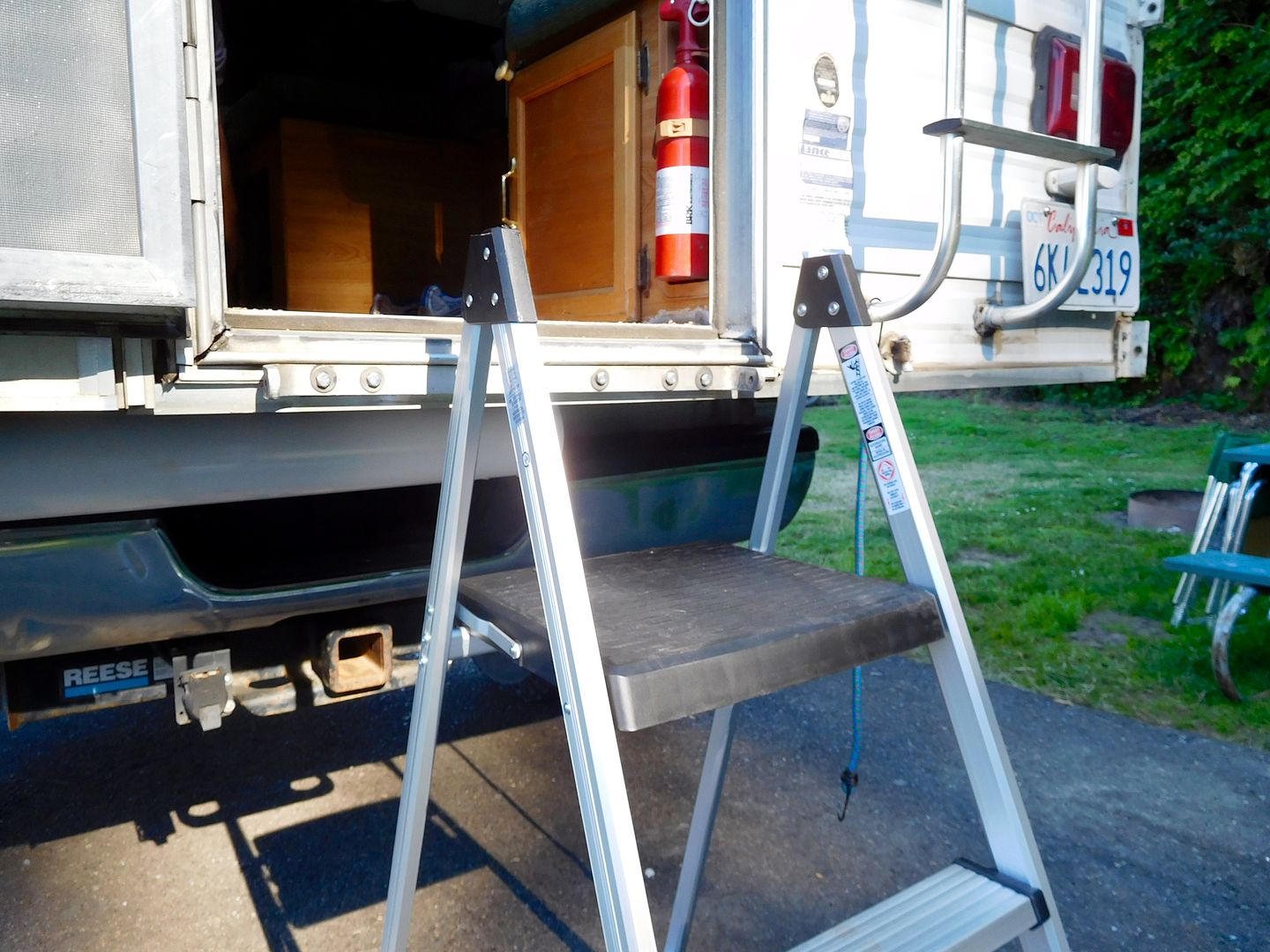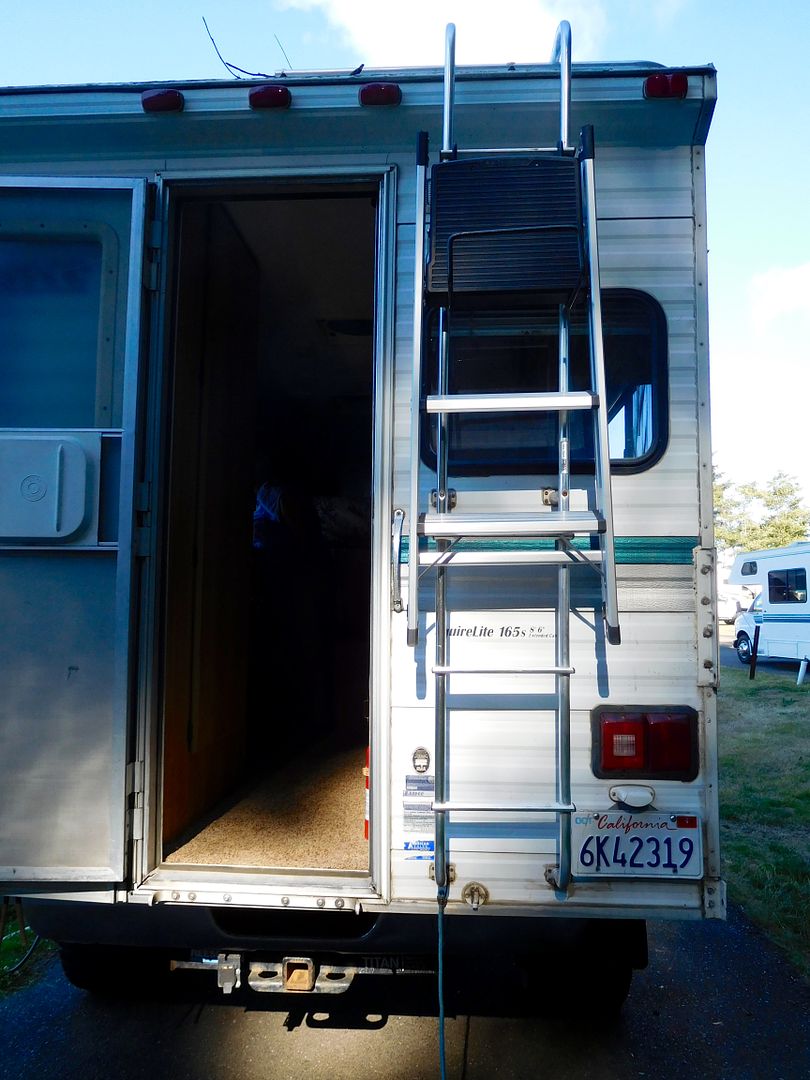Steps. Stairs. Ladders. We used the 4 step version of steps made in OR for the first 12 years we owned the TC. They were lightweight, rather narrow of breach and had ONE important feature, a feature that would only later come to light. That was the 'V' shaped hanger (with 4 bolts going into the bottom frame rail) which put the cross, wide, "U" strut as close to the TC frame as possible decreasing the leverage on the top hanger. These worked fine for over a decade. I bolted them on the "V" iron with 10mm bolts/nuts and they were easy to extend to the ground, especially over time as they got looser. Time in the saddle caused the rivets in the steps, as mentioned above, to loosen and increase in wobble. We then decided to go big-time with Glow Steps. Twice a heavy; wider; much more robust with nice features for older folks. However, they were very tight, and it took a lot of pull to get them to the ground; a lot. Two things took their toll on the "V" hanger, now just an aluminum plate curved at the ends with holes for the aluminum pins which held the step to the TC. The tightness caused a lot of torque to the bolts in the lower frame rail and the wood surrounding the bolts finally succumbed. It did not help that the former 4 bolt holes could not be used with the G.S.'s and a further six were required making the bottom plate look like swiss cheese with ten weakened points. The fact that the pivot point at the pins was farther out away from the frame also added to the torquing and eventual failure of the bottom plate. One other mitigating circumstance was in play here. I had a couple of early attempts at carrying water in old milk cartons: a tragic mistake. They're just too flimsy. A couple gallons of water soaked the floor over time at the back of the TC behind a little storage door. This cause the floor to have some dry rot and weaken the area where the floor meets the back wall of the camper around the door. I had a local TC guru work on this problem and he added a 2" aluminum angle to the entire back wall at the floor junction. I don't think it was sealed well and the problem is still there. The woe is the bottom plate of the TC frame does not go all the way across the back. There is a gap where the tank dump valves are located with no support. He said if the Lance were made better it could take the weight of the steps on the rear plate. He said the wall from the bottom up is failing.
So, what is plan C? I've been experimenting with folding step ladders to see if one could be used without adding weight to the door threshold. I had an old 3' aluminum step ladder built in 1955 with no upper safety railing. I worked well; was very lightweight, but did not do well on unever or soft ground. Plus the step pads were very narrow. I cut a piece of old truck mud flap to go under the outboard legs of the ladder and that gave a little 'floatation' to the outer steps and also made the inboard steps lean in a bit giving the ladder a firmer connection to the TC. It was a bit too flimsy. I then went through a succession of step ladders and cut the top safety rail off just above the hinge. The current one is a Gorilla Ladder and has a 10" rise to the steps, and has that nice wide upper step, but is a couple inches too tall to close the door.

It does store easily on the TC ladder:

I'm not done with this dilemma yet.
jefe

